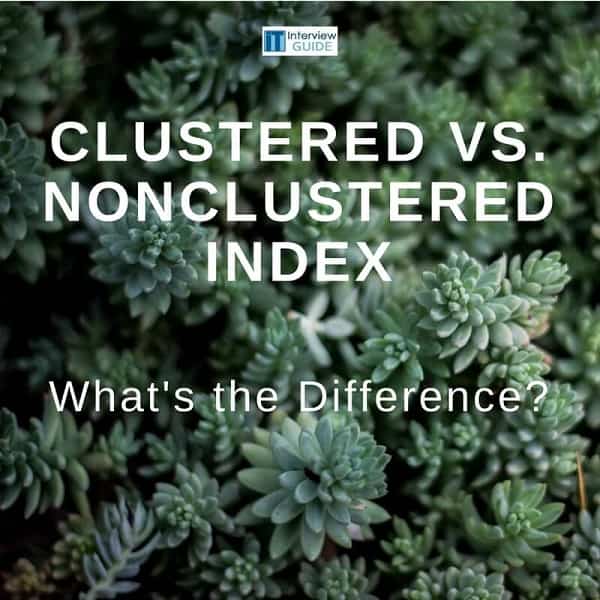Table of Contents
*This post may contain affiliate links. As an Amazon Associate we earn from qualifying purchases.
One of the commonly tested interview questions is the difference between clustered and nonclustered index in database management. These two functions often have similar physical structures in the SQL server. However, their use in the relational database is entirely different. This post provides you with a clear cut differences between the clustered vs nonclustered index.
Clustered vs Nonclustered Index: The Differences
A clustered index used in a relational database determines the order in which records are stored in a table. This, therefore, means that a table can only have a single clustered index. Their leaf nodes are the actual data rows of the table. A non-clustered index, however, is an index that stores table records in a logical order, which does not match their physical storage order on the disk. In other terms, the nonclustered index uses a second list that has links to the rows on the disk.
A table can contain several nonclustered indexes at a go. However, you should note that every new index created increases the time you need to create a new record. Unlike in the clustered index, the leaf nodes of a nonclustered index contain index rows rather than data pages. Therefore, it is faster to read from a clustered index if you intend to access all the columns quickly. You won?t have to view the index first before you can gain access to the table.
Normally, a clustered index created on the key columns (also called clustering key) brings about a particular ordering to the rows of the table. The rows are also set up in a sorted manner on the clustering key used to create the clustered index. A non-clustered index, however, does not alter the pre-ordering of the rows within the table. These indexes exist as a separate first class object in a database. Also, the base table and other non-clustered indices created exist as different elements within the database.
What Are the Advantages of a Clustered Index?
The main advantage a clustered index in the whole clustered vs nonclustered index debate? The first one offers ease of access to data from frequently used tables. When you insert a clustered index on a common field in two separate tables, all the entries related to the field will be stored next to each other on the disk irrespective of its table of origin. This allows the retrieval query to run much faster as compared to when the entries are scattered in the disk.
How a Clustered Index Works
The syntax of a clustered index is as follows:
CREATE CLUSTERED INDEX cidx_SampleTable_SampleColumns ON SampleTable (SampleColumns)
When you use a clustered index on your table, the data rows get sorted first and then stored. Your table will now be called a clustered table. The row data is stored in a balanced binary tree unlike the heap tables of nonclustered tables.
Note: You can read more about this matter in our article about the clustered index.
Conclusion
This post covers the key points to note when dealing with clustered indexes. If you have any thoughts on the difference between clustered and nonclustered index in a relational database, share it in the comment section.

